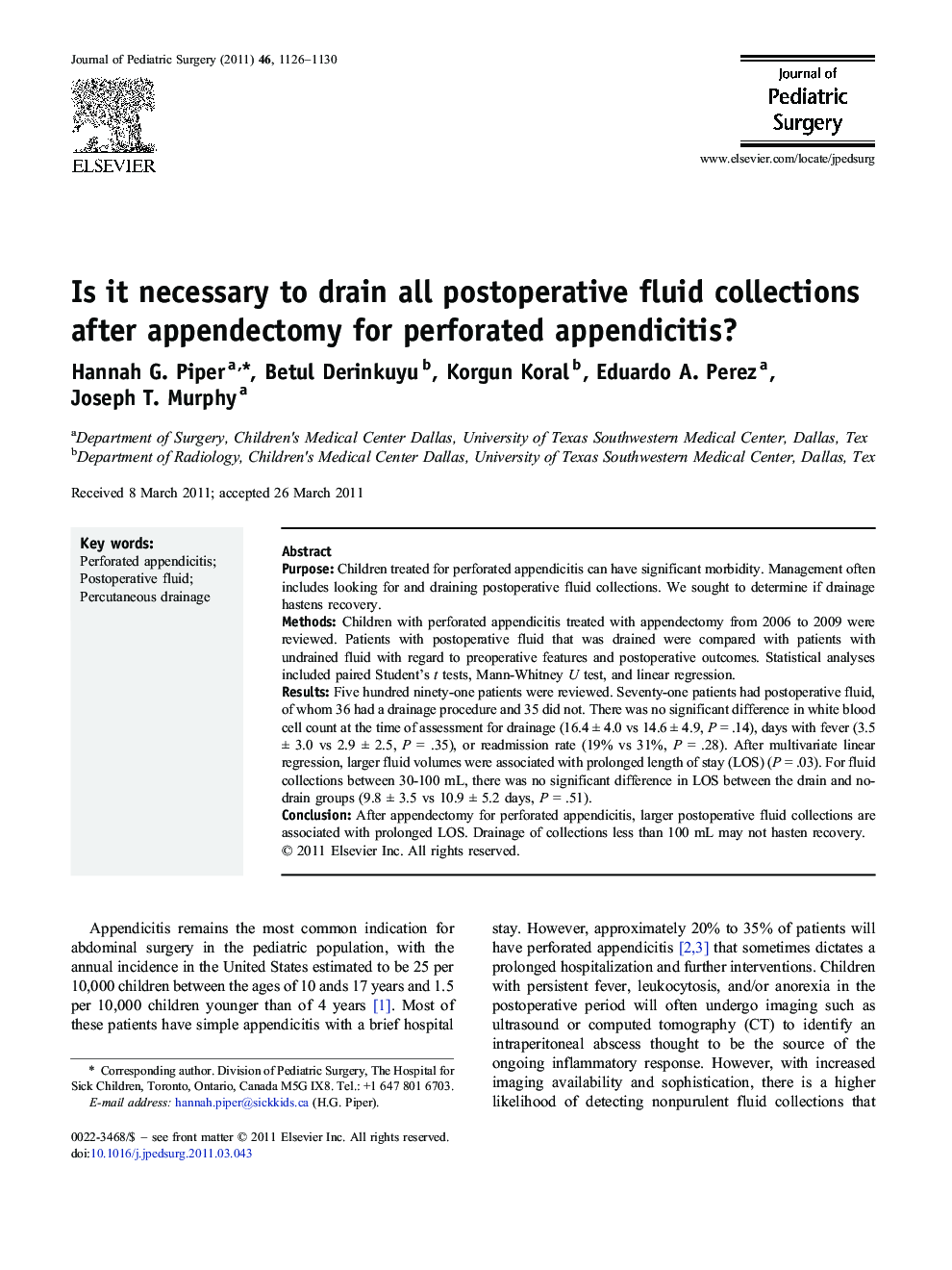| Article ID | Journal | Published Year | Pages | File Type |
|---|---|---|---|---|
| 4157084 | Journal of Pediatric Surgery | 2011 | 5 Pages |
PurposeChildren treated for perforated appendicitis can have significant morbidity. Management often includes looking for and draining postoperative fluid collections. We sought to determine if drainage hastens recovery.MethodsChildren with perforated appendicitis treated with appendectomy from 2006 to 2009 were reviewed. Patients with postoperative fluid that was drained were compared with patients with undrained fluid with regard to preoperative features and postoperative outcomes. Statistical analyses included paired Student's t tests, Mann-Whitney U test, and linear regression.ResultsFive hundred ninety-one patients were reviewed. Seventy-one patients had postoperative fluid, of whom 36 had a drainage procedure and 35 did not. There was no significant difference in white blood cell count at the time of assessment for drainage (16.4 ± 4.0 vs 14.6 ± 4.9, P = .14), days with fever (3.5 ± 3.0 vs 2.9 ± 2.5, P = .35), or readmission rate (19% vs 31%, P = .28). After multivariate linear regression, larger fluid volumes were associated with prolonged length of stay (LOS) (P = .03). For fluid collections between 30-100 mL, there was no significant difference in LOS between the drain and no-drain groups (9.8 ± 3.5 vs 10.9 ± 5.2 days, P = .51).ConclusionAfter appendectomy for perforated appendicitis, larger postoperative fluid collections are associated with prolonged LOS. Drainage of collections less than 100 mL may not hasten recovery.
